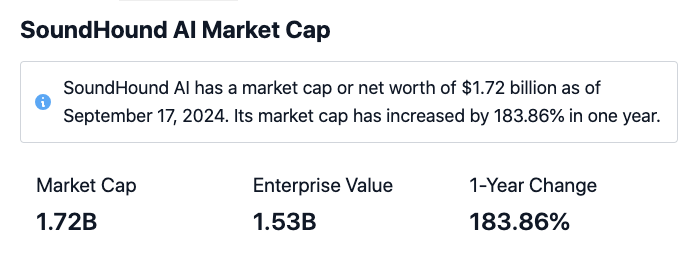Leveraging sentiment analysis within AI stock trading is a powerful way to gain insights into market behaviour, particularly for penny stocks and cryptocurrencies where sentiment plays a significant role. Here are 10 top tips on how to use sentiment analysis in these markets.
1. Sentiment Analysis What exactly is it, and why is it significant?
TIP: Be aware of the fact that price movements on a short-term basis are influenced by sentiment, especially with regard to speculative stock and copyright markets.
The reason: Price action is usually followed by sentiment in the public, which makes it a significant indicator for traders.
2. AI is used to analyse data from multiple sources
Tip: Incorporate diverse data sources, including:
News headlines
Social media (Twitter, Reddit, Telegram, etc.)
Forums, blogs, and blogs
Earnings call and press releases
Why? Broad coverage gives more of a picture overall of the overall mood.
3. Monitor Social Media in Real Time
Tips: To monitor trending discussions, make use of AI tools like Sentiment.io (StockTwits), LunarCrush (Sentiment.io) or StockTwits.
For copyright Focus on influential people as well as discussions about particular tokens.
For Penny Stocks: Monitor niche forums like r/pennystocks.
Why: Real-time monitoring helps identify emerging trends.
4. Pay attention to Sentiment Information
Pay close attention to metrics, such as:
Sentiment Score: Aggregates positive vs. negative mentions.
Number of Mentions Tracks buzz about an asset.
Emotion Analysis: Assesses the intensity, fear or the feeling of uncertainty.
What are they? These metrics provide actionable insight into market psychology.
5. Detect Market Turning Points
Tips: Use sentiment analysis to determine extreme positivity (market peaks), or negativity, (market bottoms).
Contrarian strategies thrive in extreme circumstances.
6. Combine Sentiment with technical Indicates
Tip: Pair sentiment analysis with traditional indicators such as RSI, MACD, or Bollinger Bands to confirm.
What's the reason? The use of sentiment alone can result in false indicators; technical analysis provides more context.
7. Automatically integrating sentiment data
Tip: Use AI trading bots that incorporate sentiment scores into their decision-making algorithms.
Automated responses to markets that are volatile enable rapid mood changes to be spotted.
8. Account for Modulation of Sentiment
Attention: Pump-and-dump and fake-news schemes are especially dangerous in penny stock and copyright.
Use AI-based tools for detecting irregularities. For instance sudden rises in mentions by low-quality or suspect accounts.
What is the benefit of recognizing manipulators it is possible to avoid the false signals.
9. Back-test strategies based on sentiment
Tips: Find out how the past market conditions might have impacted the performance of sentiment-driven trading.
Why? This will ensure your strategy for trading will benefit from the analysis of sentiment.
10. Follow the sentiment of key influencers
Tip: Use AI as a method to track market influencers. They could be notable analysts, traders or copyright developers.
For copyright: Focus on posts and tweets from prominent figures like Elon Musk or other prominent blockchain pioneers.
Follow industry analysts and activists for Penny Stocks.
Why: Influencer opinion can have a significant impact on the market's sentiment.
Bonus: Combine Sentiment and Fundamental Data with On-Chain Data
Tips: Mix sentiment with fundamentals for penny stocks (like earnings reports), and on-chain data to track copyright (like wallet movements).
Why: Combining the types of data allows for a holistic perspective and reduces the reliance on just sentiment.
With these strategies to implement these tips, you can apply sentiment analysis to your AI trading strategies for both penny stocks and cryptocurrencies. View the recommended continue reading this for ai trader for site recommendations including ai for stock trading, ai trading platform, ai penny stocks, best ai trading app, free ai trading bot, copyright ai trading, ai investing, ai stock trading app, best ai trading app, free ai trading bot and more.

Top 10 Tips To Pay Attention To Risk Metrics For Ai Stock Pickers, Predictions And Investments
Risk metrics are vital to ensure that your AI stock picker and predictions are balanced and resistant to market volatility. Being aware of and reducing risk is essential to safeguard your investment portfolio from major losses. This also helps you to make informed, data-driven choices. Here are 10 suggestions to incorporate risk-related metrics into AI investment and stock-selection strategies.
1. Understanding Key Risk Metrics Sharpe Ratios, Max Drawdown, and Volatility
Tips - Concentrate on the most important metrics of risk like the sharpe ratio, maximum withdrawal and volatility, to determine the risk adjusted performance of your AI.
Why:
Sharpe ratio is a measure of return relative to risk. A higher Sharpe ratio indicates better risk-adjusted performance.
The highest drawdown is an indicator of the most significant peak-to-trough losses that help you be aware of the possibility of large losses.
Volatility quantifies the price fluctuations and the risk associated with markets. A high level of volatility suggests a higher risk, while lower volatility signals stability.
2. Implement Risk-Adjusted Return Metrics
TIP: To gauge the actual performance, you can utilize measures that are adjusted for risk. These include the Sortino and Calmar ratios (which are focused on the downside risks) as well as the return to maximum drawdowns.
Why are these metrics that evaluate the performance of an AI model, based on its level of risk. Then, you can assess if the return is worth the risk.
3. Monitor Portfolio Diversification to Reduce Concentration Risk
Tips: Make use of AI to optimize and manage the diversification of your portfolio.
Diversification can reduce the risk of concentration which can occur in the event that an investment portfolio is dependent on a single sector, stock or market. AI can help identify relationships between assets and then adjust the allocations to reduce the risk.
4. Track beta to gauge market sensitivity
Tips: The beta coefficient can be utilized to assess the level of the sensitivity your portfolio or stocks are to market volatility.
The reason is that a portfolio with an alpha greater than 1 is more volatile than the market, whereas having a beta lower than 1 indicates less volatility. Knowing the beta is crucial for tailoring risk based on investor risk tolerance and the market's movements.
5. Implement Stop-Loss levels as well as Take-Profit levels based on the tolerance to risk.
Tip: Establish Stop-loss and Take-Profit levels based on AI predictions and risk models that help manage loss and secure profits.
Why? Stop-losses are designed to protect you from large losses. Limits for take-profits, on the other hand will secure profits. AI can assist in determining optimal levels using historical prices and volatility. It helps to maintain a equilibrium between risk and reward.
6. Monte Carlo Simulations: Risk Scenarios
Tips Rerun Monte Carlo simulations to model a wide range of potential portfolio outcomes under various markets and risk factors.
Why is that? Monte Carlo simulations are a method to gain an idea of the probabilities of future performance of a portfolio. This lets you to better plan for risks such as extreme volatility and large losses.
7. Examine correlations to evaluate the risk of systemic as well as non-systematic.
Tip. Make use of AI to study the relationship between the assets in your portfolio and market indices. You will be able to identify systematic risks as well as unsystematic ones.
What is the reason? Systematic and non-systematic risk have different consequences on markets. AI can help identify and minimize unsystematic risks by recommending assets with less correlation.
8. Check Value At Risk (VaR) and calculate potential losses
Utilize the Value at risk models (VaRs) to determine potential losses for a portfolio using a known confidence level.
Why? VaR can help you determine the worst-case scenario that could be in terms of losses. It gives you the chance to evaluate the risk that your portfolio faces during normal market conditions. AI can calculate VaR in a dynamic manner and adjust for the changing market conditions.
9. Set Dynamic Risk Limits Based on Market Conditions
Tip: Use AI to adjust limits of risk based on market volatility as well as economic conditions and the relationships between stocks.
The reason dynamic risk limits are a way to ensure your portfolio isn't exposed to risk that is too high during times that are characterized by high volatility or uncertainty. AI can analyse real-time data and adjust portfolios to keep your risk tolerance to acceptable levels.
10. Use Machine Learning to Predict Tail Events and Risk Factors
Tip: Use machine learning algorithms based on sentiment analysis and historical data to forecast extreme risks or tail-risks (e.g. market crashes).
Why: AI-based models can discern patterns in risk that are not recognized by traditional models, and assist in preparing investors for the possibility of extreme events occurring on the market. Investors can plan ahead to avoid catastrophic losses applying tail-risk analysis.
Bonus: Reevaluate your Risk Metrics as Market Conditions Change
TIP: Always reevaluate your risk models and risk metrics in response to market changes and update them frequently to reflect the changing economic, geopolitical and financial conditions.
The reason: Market conditions can change rapidly, and using old risk models could lead to untrue evaluation of risk. Regular updates will make sure that AI models are up-to-date to reflect the current market dynamics and adapt to new risk factors.
This page was last edited on 29 September 2017, at 19:09.
You can create a portfolio with greater resilience and adaptability by tracking and incorporating risk-related metrics into your AI selection, prediction models, and investment strategies. AI tools are powerful for managing risk and analysing it. They enable investors to make informed, data-driven decisions which balance acceptable risks with potential gains. These suggestions can help you build an effective risk management strategy to improve your investment's stability and profitability. Read the recommended updated blog post about ai trading app for site recommendations including trading bots for stocks, ai copyright trading bot, penny ai stocks, ai trading, investment ai, copyright predictions, ai predictor, trading chart ai, stocks ai, ai financial advisor and more.
